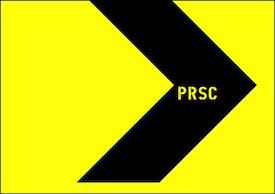

For an urban location that is over two centuries old, it sometimes feels strange that transience is a defining characteristic of Stokes Croft. Partly, its a function of the traffic flows that constantly run through the place. The miles of double yellow lines ensure that the speed of the traffic, running close to the pavements, makes the place uncomfortable for pedestrians and impossible to just stop and hang out for a bit if you come by car. The message from the road is don’t stop, don’t look, get out of here.
Many of the locals are pretty transient too; Stokes Croft functioning as a just one node in the invisible networks and journeys of Bristol’s homeless citizens. Many of the area’s buildings, despite their age and apparent permanence, suggest lost times and lives past. Passing Perry’s Carriage works, the Kwik-Fit of the mid nineteenth century, I find my mind wandering to an era of horse-drawn capitalism long sent to the knackers’ yard.
Of all the disciplines available to us, archaeology is, I think, the one most closely tuned to transience; a whole intellectual enterprise premised on uncovering and unearthing the material scraps and litter of the past. Rachel Kiddy has done us all a big favour by bringing her archaeologists trowel and eye to the area.
With a tiny grant from the British Archaeological Council, she spent a considerable time in and around Stokes Croft meeting its homeless population and asking them what their city looked like, what places mattered to them? Then, with their cooperation, she excavated and examined them. Not surprisingly Stokes Croft was high on the list and Turbo Island. So in 2009 they dug it up, sifted the earth and took a look at what the past has left us here. Some of those finds went on show for a weekend at Emporium in December 2010: Stokes Croft in a 1000 Objects.
Amongst the most intriguing finds for me were the fragments of seventeenth-century drinking cups and eighteenth-century tobacco pipes. People have been hanging out for a smoke and drink on Turbo Island since before the Napoleonic wars. Various forms of drug taking detritus were well represented: foil for cooking smack, cheap plastic lighters, cigarette butts and methadone cups and bottles.
Strange that this miserable half way house of a drug should have acquired so many urban myths about its origins and naming. On the wall, the exhibition records one person’s tale – that the name deriving from “method one”; one of the many methods that German scientists invented to synthesise it as a replacement for opium and morphine during the Second World War. In fact the name was given to the drug by an American pharmaceutical regulatory agency in 1947 after the US had requisitioned all of the German chemical industry’s patents and inventions.
There were many other pleasures to be had at Emporium: the recreation of a homeless skipper – a dry and secure sleeping spot constructed from pallets and paper; a tiny intimate cinema where one could watch the media coverage of the dig. The evident delight of both homeless volunteers and Bristol University’s own professor of archaeology at their finds was infectious.
Best of all, there was the story of Turbo Island itself, or rather the story of what used to be there. A triangular building stood on the site, shoe shop downstairs and the family living above it, until in 1940 it was struck by a German bomb and the ruins that were left were pulled down. I listened to the tale on headphones, told by the John Holdcroft the son of the shop owner, while surveying a wall of Turbo Island treasures: crushed beer cans and a fake plastic zombie wound left over from a Stokes Croft street party.
Stokes Croft in a 1000 Objects brilliantly captured all these moments, all these transient objects and lives that have passed through the area. It seems both appropriate and disappointing that that the exhibition was so transient itself. If you would like another chance to see it, before it all disappears into files and boxes for future archaeologists to uncover, let us know.
Posted on January 12, 2011 by prsc
Categories: David Goldblatt | galleries | homeless | turbo island